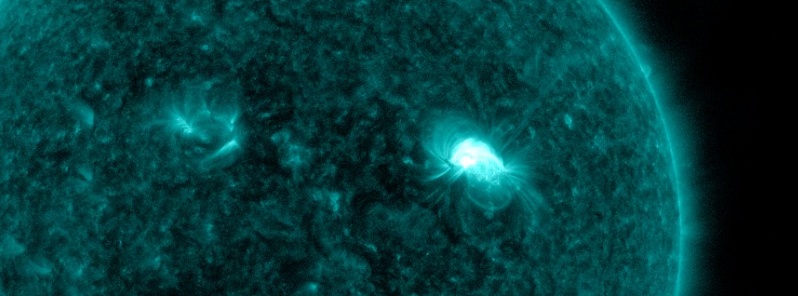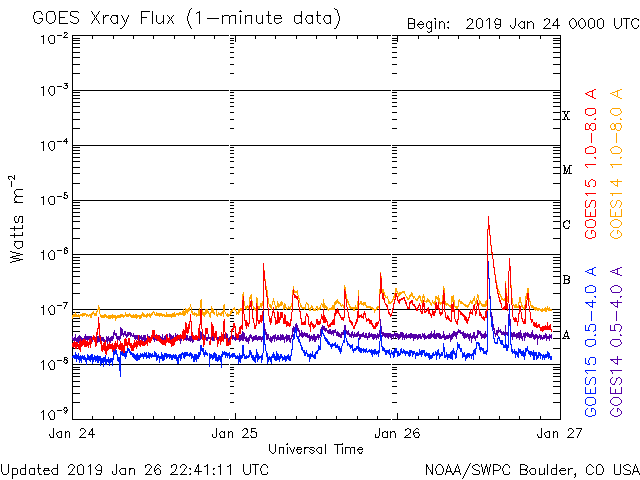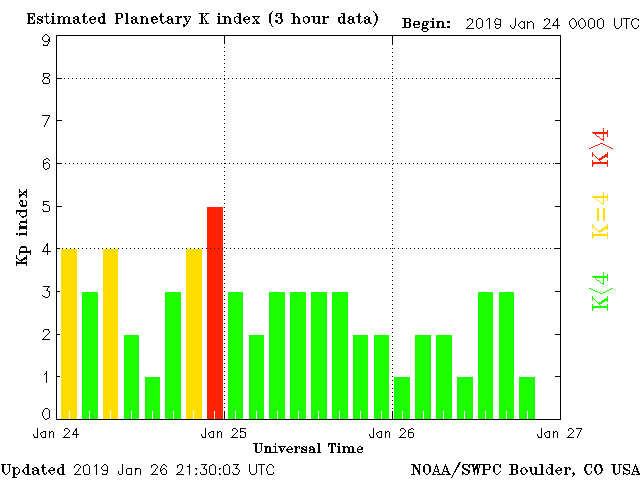C5.0 solar flare erupts from AR2733, the strongest since February 18, 2018

A weak solar flare measuring C5.0 at its peak erupted from Active Region 2733 at 13:22 UTC on January 26, 2019. The eruption started at 13:12 and ended at 13:34 UTC. This was the strongest solar flare since February 18, 2018.
It was preceded by B1.5 at 03:49 UTC, B2.2 at 06:47, B1.2 at 08:01 and B1.3 at 08:13 UTC, and followed by B2.9 at 15:55, B8.6 at 16:28 and B1.9 at 19:13 UTC.
No Earth-directed Coronal Mass Ejections (CMEs) were observed in available coronagraph imagery.
No space weather storms were observed over the past 24 hours.

Active Region 2733 has beta magnetic configuration and is capable of producing similar intensity flares in the days ahead.
Solar activity is expected to remain very low, with a slight chance for C-class flares from the abovementioned region through January 28.
Meanwhile, the solar wind parameters as measured by DSCOVR spacecraft over the past 48 hours indicated the continued influence of a positive polarity Coronal Hole High Speed Stream (CH HSS). In response, the geomagnetic field ranged from quiet to G1 (Minor) storm levels. G1 – Minor geomagnetic storm threshold was reached at 23:59 UTC, January 24.


On September 6, 2017, the Sun produced the largest X-class solar flare in a decade – X9.3 from Active Region 2673. This was one of the most active regions during the entire Solar Cycle 24, creating the largest flare of the cycle and a total of 4 X-class flares.
We haven't seen an M-class solar flare since M1.1 of October 20, 2017, produced by AR2673 as it returned to Earth-facing side of the Sun.
In March 2018, NOAA reported that the number of sunspots was the lowest since 2009, and that recent activity matched that of the low activity in 2007 and 2008. This made Solar Cycle 24 a uniquely short (10 year) and weak cycle.
In 2018 we had a total of 221 days without sunspots (61%), in 2017 that number was 104 (28%); in 2016 32 (9%); and in 2015 0.
Featured image: C5.0 solar flare at 13:22 UTC on January 26, 2019. Credit: NASA/SDO AIA131

Commenting rules and guidelines
We value the thoughts and opinions of our readers and welcome healthy discussions on our website. In order to maintain a respectful and positive community, we ask that all commenters follow these rules.